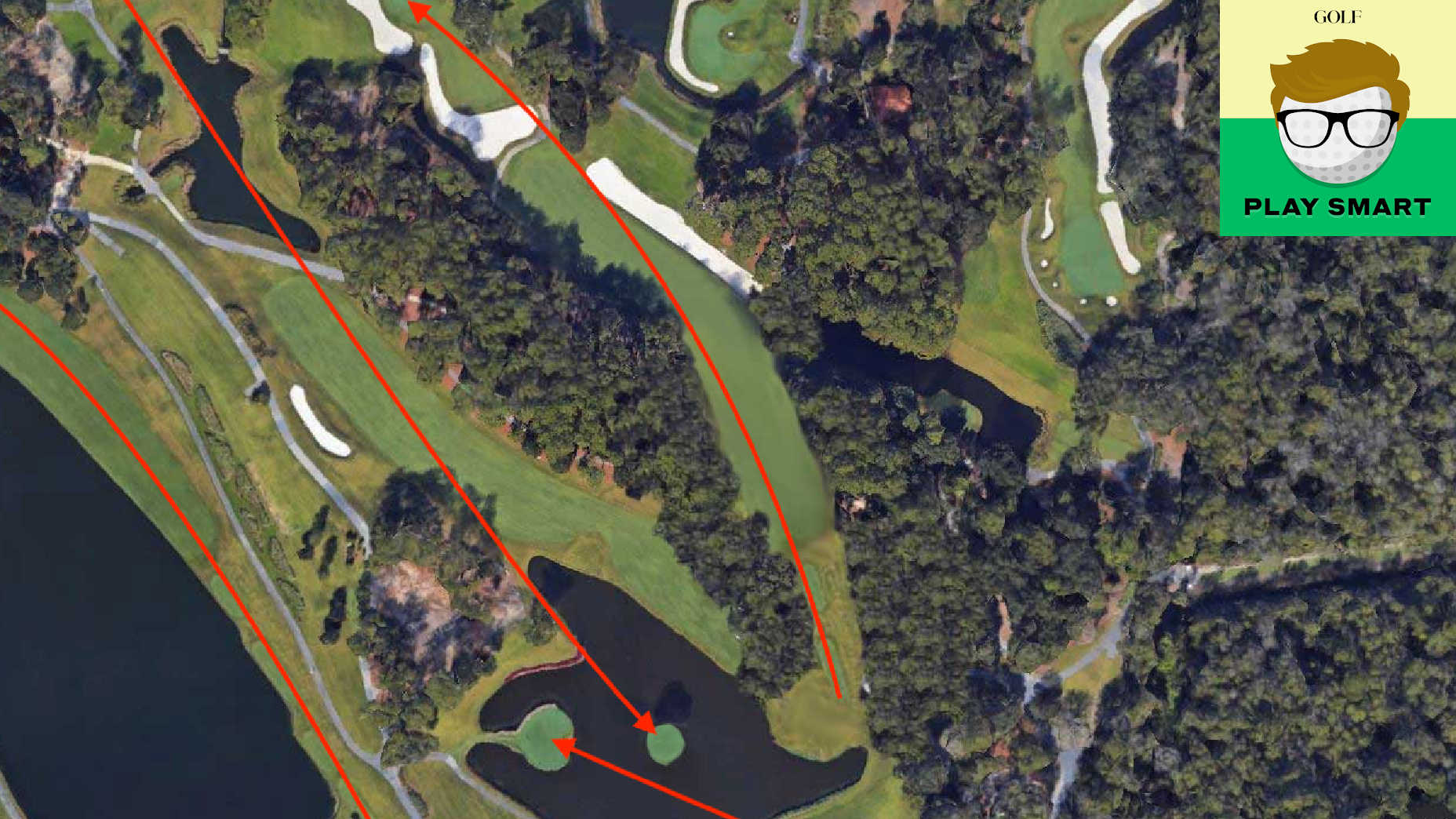Welcome to Play Smart, a game-improvement column that drops every Monday, Wednesday, and Friday from Director of Game Improvement content Luke Kerr-Dineen to help you play smarter, better golf.
The closing stretch at TPC Sawgrass is one of the most exciting and entertaining in golf, and the final three holes are, in my opinion, the best three holes on the entire course. But my love for great golf holes is trumped only by my love for chaotic, ridiculous golf holes. So last week, as I was re-reading my colleague Dylan Dethier’s thought-experiment about what would happen if a player accidentally hit their ball into the other island in the 17th hole’s lake, I started thinking about what would happen if you made players intentionally hit their ball onto that second island — and redesigned TPC Sawgrass’ 16th hole to that effect.
No, I don’t think this actually should or could happen, but what’s the harm in imagining? So let’s test the limits of my photoshopping skills and think through it.
Right now the final four holes of TPC Sawgrass close:
15th hole: par 4, 470 yards
16th hole: par 5, 523 yards
17th hole: par 3, 137 yards
18th hole: par 4, 462 yards
Here’s how the stretch looks from the Google Earth:

The secondary island between the 16th and 17th holes was once not an island at all. Back in the 80s it was connected to a small strip of land before the area was reinforced and left on its own. Today the mini-island hosts one tree, some flowers, and a cameraman during Players Championship week.
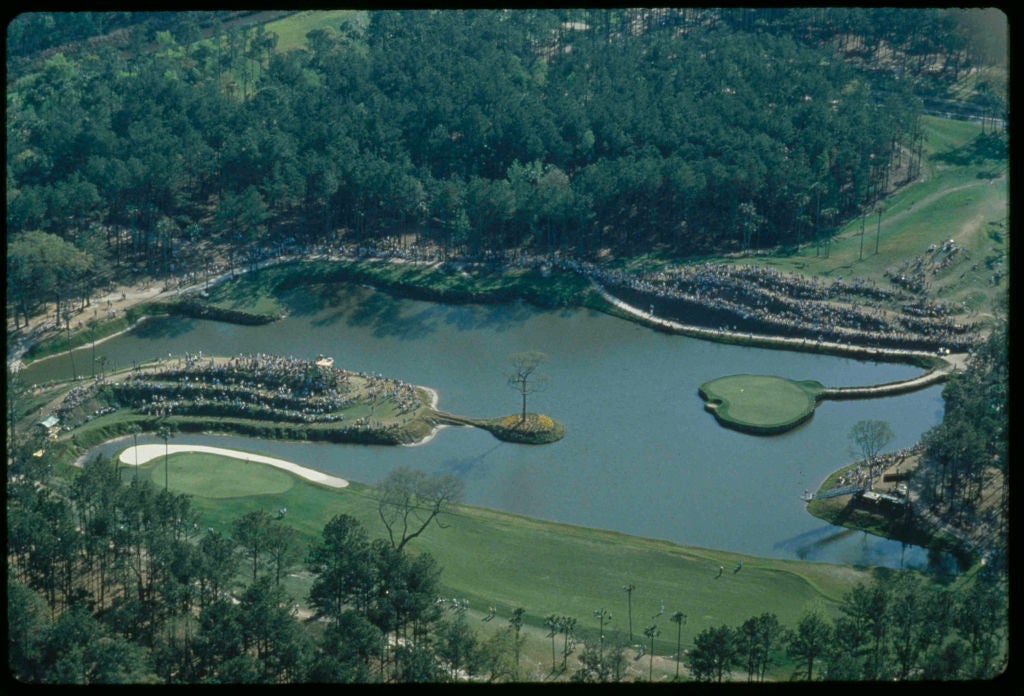

But what if you made it a green?
A quick look on Google Earth suggests the island is a slightly wonky circle, roughly 55 feet in diameter. So in my bizarro world, I say let’s chop the tree down, turn that into a green, scrap the current 16th green and fill that space by re-routing the 15th hole with a bunch of new trees to make Mr. Player happy. The 17th and 18th holes would be left untouched.
Here’s how that re-jigged stretch would look like from Google Earth.
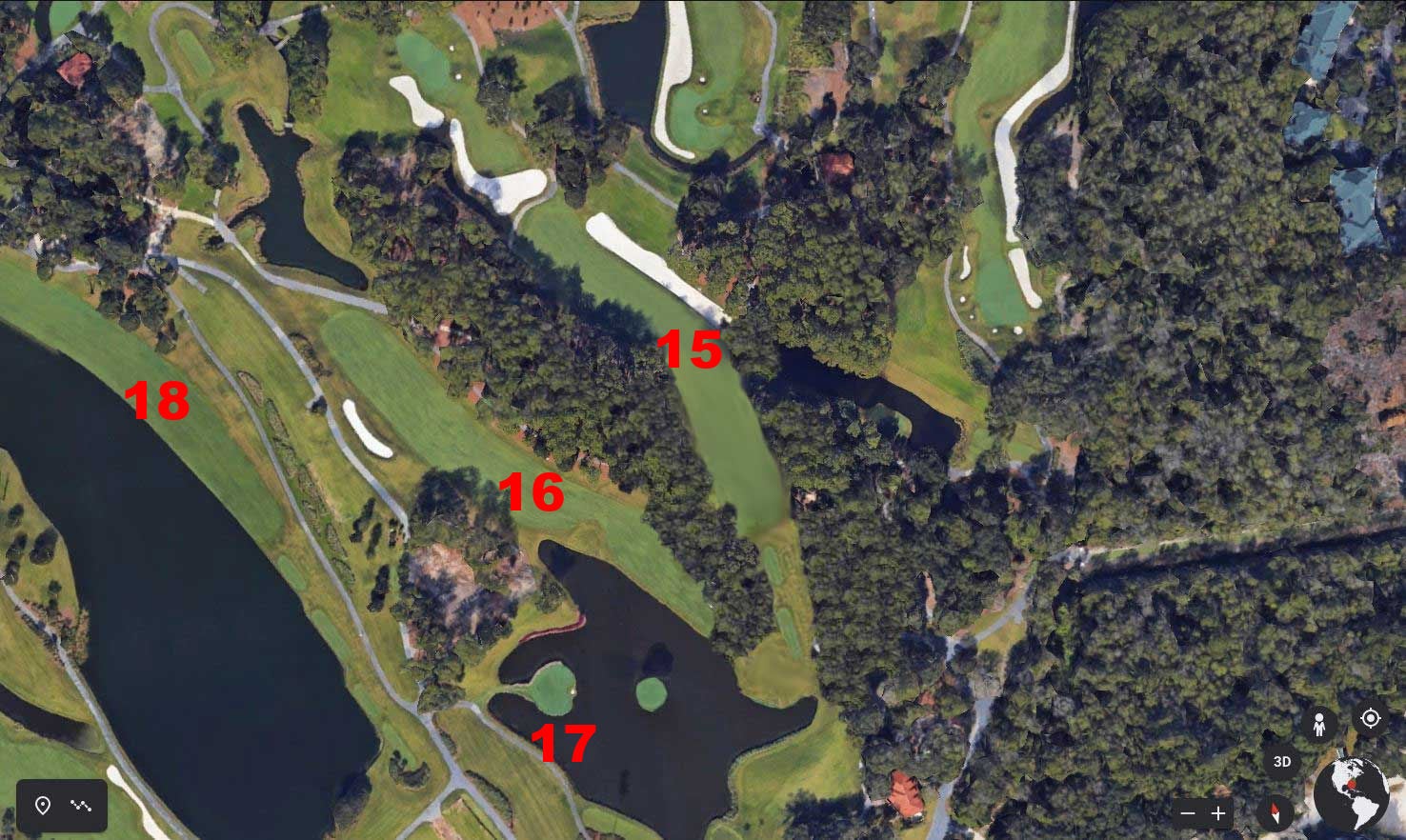
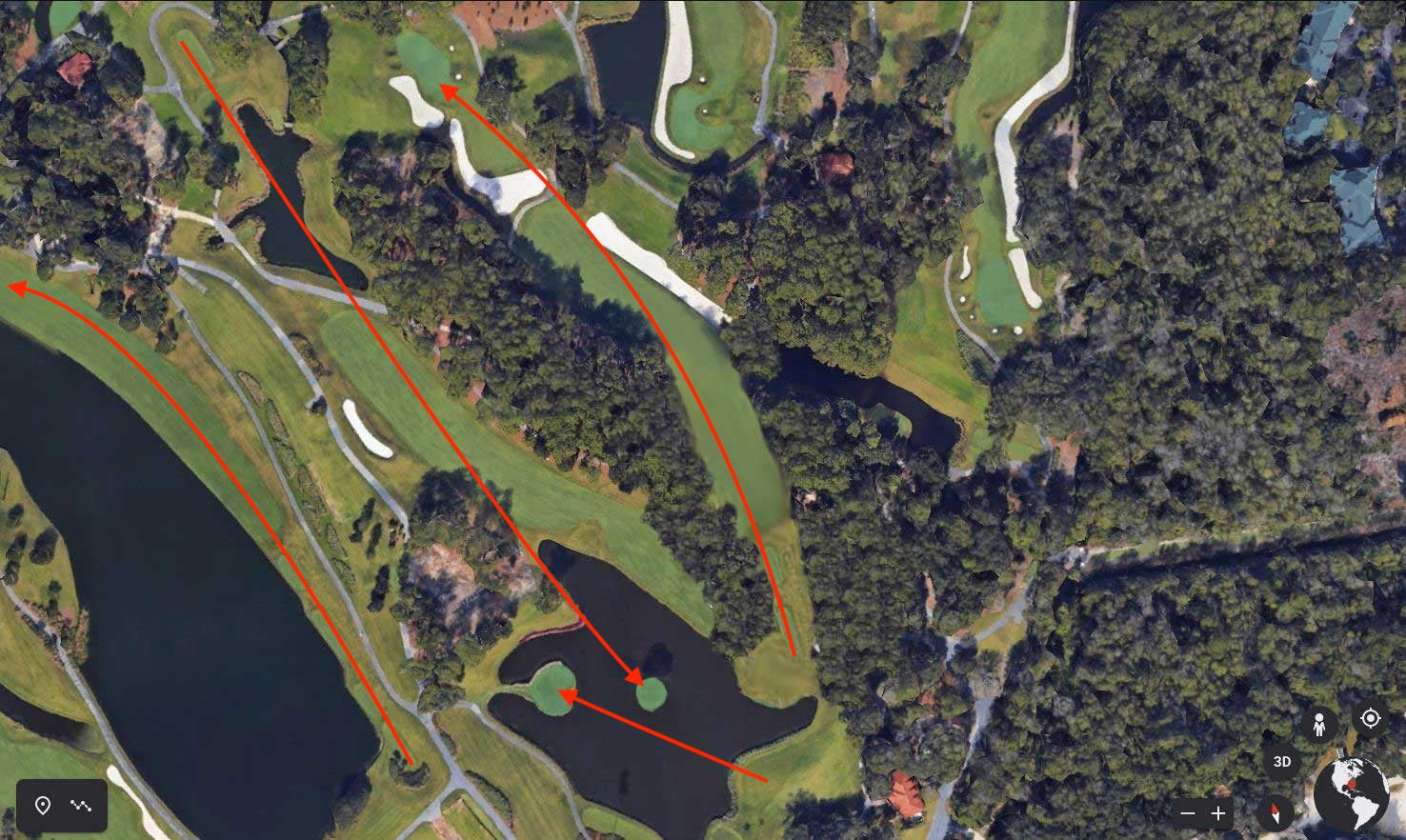
As for how pros would play it: The 15th hole shrink down to a ~430 yard dogleg left par-4 with some serious Harbour Town vibes, which I’m obviously very okay with given my unabashed love for target golf.
Most players, wary of all those trees on one side and the bunker on the other, would probably opt for a fairway wood of some sort — something that they could draw about 260 yards, which would leave them about 160 yards for their approach.
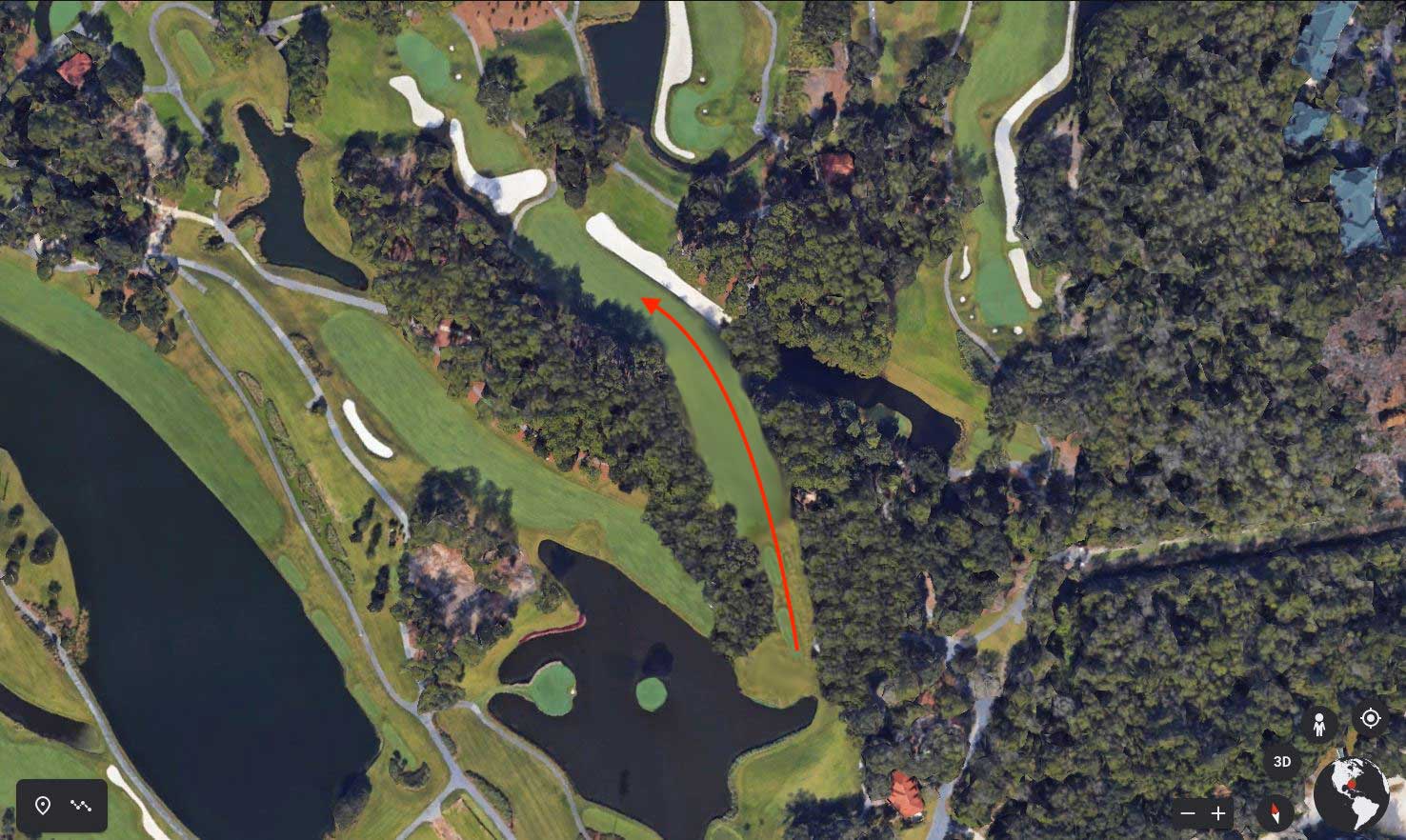
If you wanted to try to go full-Bryson, you’d need to carry something about 340 yards or else be faced with an awkward long bunker shot.
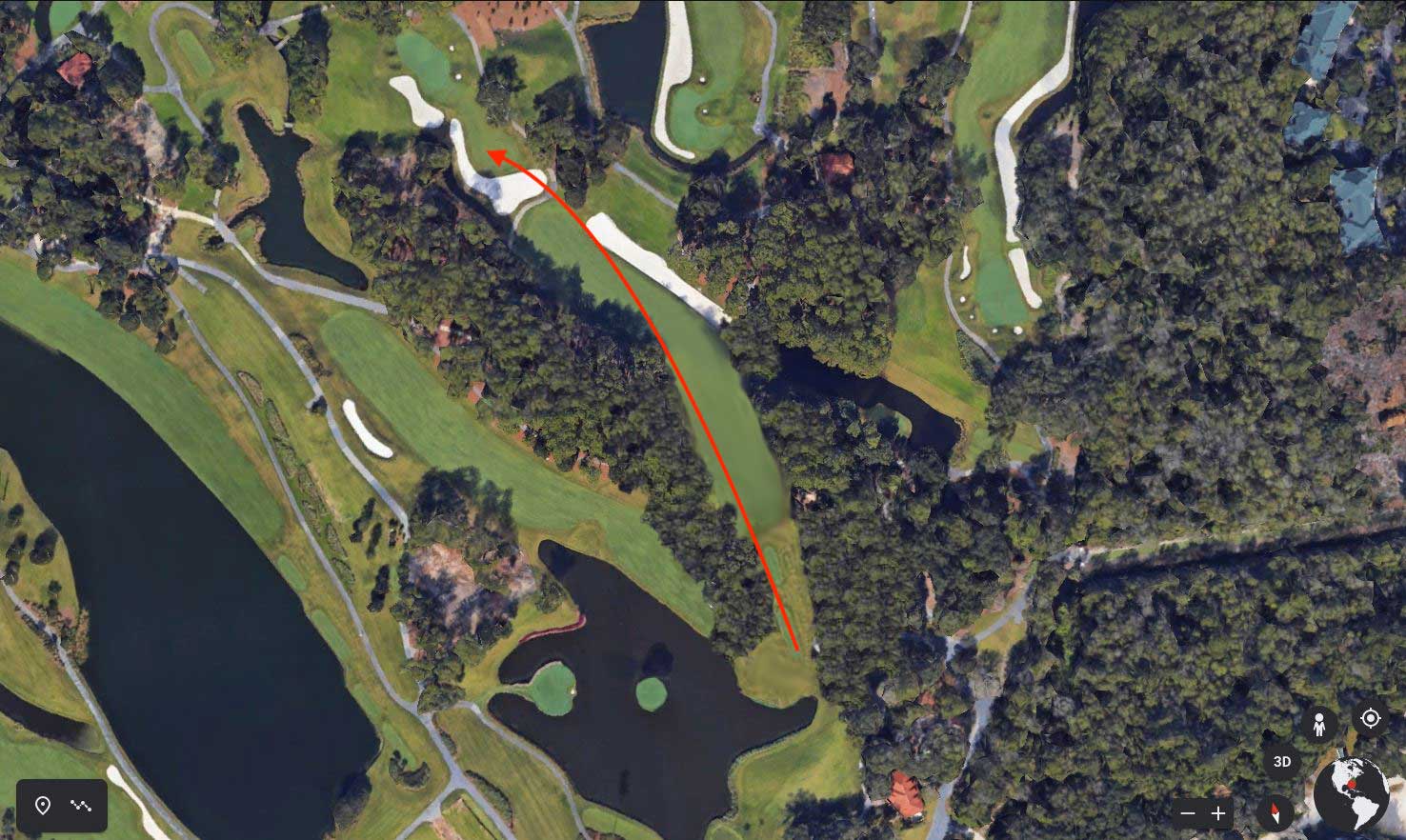
But the 16th becomes the real show-stopper.
The hole currently ranks as the easiest on the course, and even though it would shrink from 523 yards to about 480 yards in my alternate universe, the preposterously small size of the island green means it’s a true risk-reward hole — if not a tricked-up one.
The tee shot wouldn’t change much. You could hit something up to 360 yards before running out of room, which means the longest hitters would leave themselves something between 125 to 150 yards for their second shot. Tour average from that range is about 22 feet, so they’d probably go for it in two, but with literally no room for error on a 55 feet island green surrounded by water, with the wind up and pressure on, you’d need to control the spin and hit a good shot to take advantage.
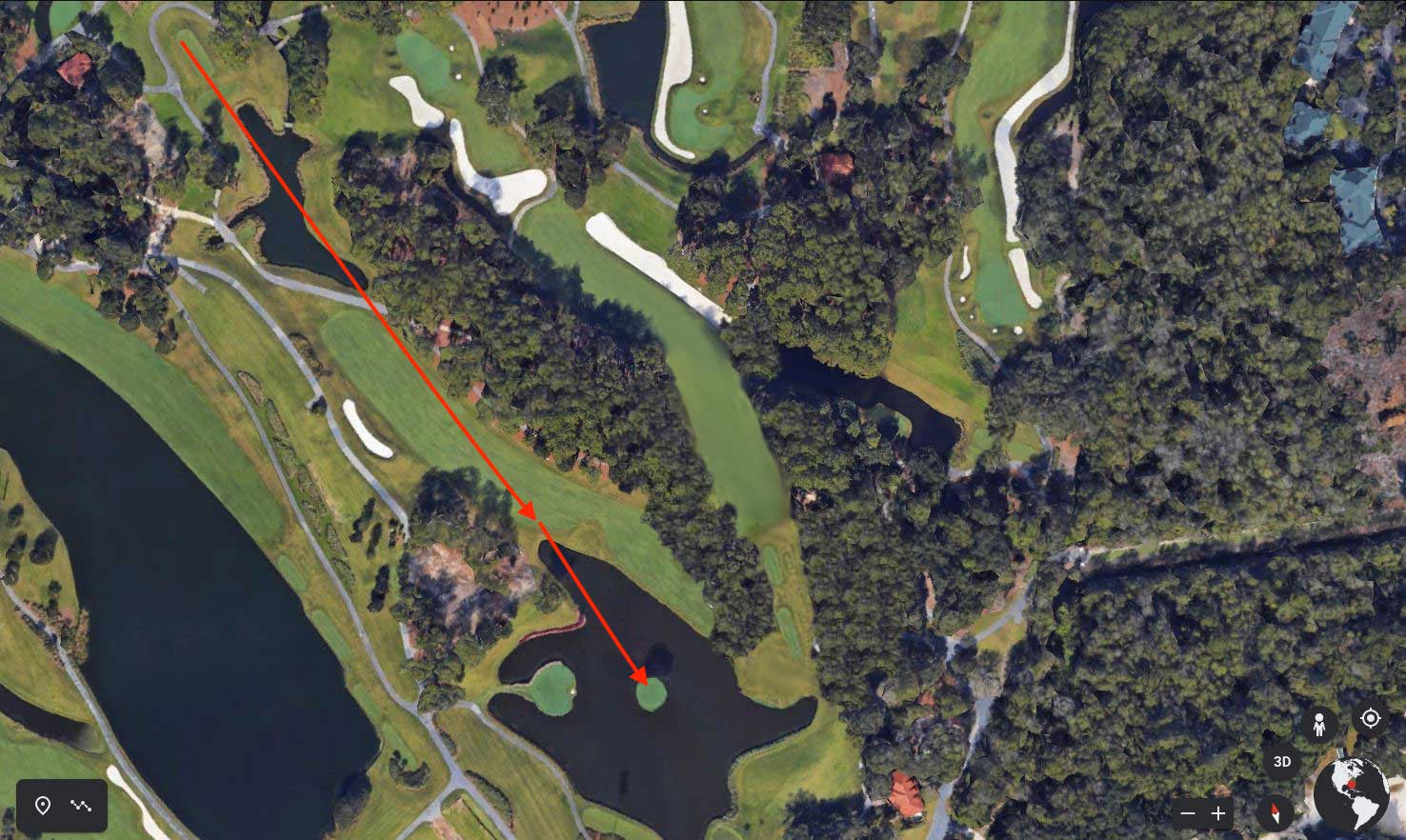
Or you could play it as a three-shot hole. If your drive ends in the 310 range, you’d need to hit two good shots: A navigating 130 yard layup short of the trees, left of the water and long of the rough — to leave yourself an 80 yard pitch into the island green.

And then onto 17 and a 18, which means the final four holes at TPC Sawgrass would feature two doglegs — one around trees and the other around water. Sandwiched between would be two island greens, the first on a reachable par 5 and the next on a short par 3. All of this wile making the course shorter!
Is this flight of fancy madness? Almost certainly. But would it be fun? Undoubtedly.
